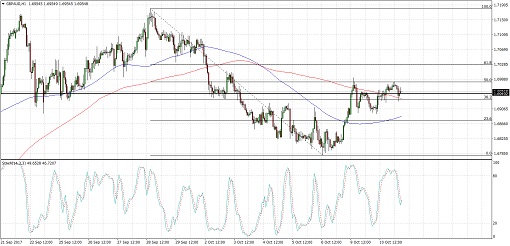GBPAUD previously broke through support at the 1.6950 minor psychological level then fell to a low of 1.6785 before making a correction. Applying the Fibonacci retracement tool on the latest swing high and low on the 1-hour time frame shows that the broken support is close to the 38.2% level.
The 100 SMA is below the longer-term 200 SMA so the path of least resistance is to the downside, which means that the selloff is likely to resume. The 200 SMA could also hold as a dynamic resistance level, but the gap between the moving averages is narrowing to signal a potential upward crossover. If this materializes, bullish pressure could kick in and trigger a climb past the Fib levels.
Stochastic is on the move down, though, which means that there’s some bearish pressure in play. If any of the Fib levels keep gains in check, price could fall back to the swing low or lower.
Data from the UK has been mixed, with manufacturing production beating expectations and the goods trade balance showing a wider than expected deficit due to slower exports. The pound has also been more vulnerable to Brexit-related updates, especially since Prime Minister May appears to be losing support and unable to inspire confidence in the economy.
In Australia, the Westpac consumer sentiment reading improved from 2.5% to 3.6% to reflect stronger optimism. Data, however, wasn’t so upbeat last week as retail sales posted a surprise 0.6% drop while trade balance components weren’t promising either.

Looking ahead, there are no major reports lined up from the UK and Australia, although China still has its trade balance due. Earlier this week, the Caixin services PMI turned out to be a disappointment and this is keeping a lid on the Aussie’s rallies. Another downbeat figure from its top trade partner could mean more Aussie weakness while an upbeat result could spur gains.
By Kate Curtis from Trader’s Way

